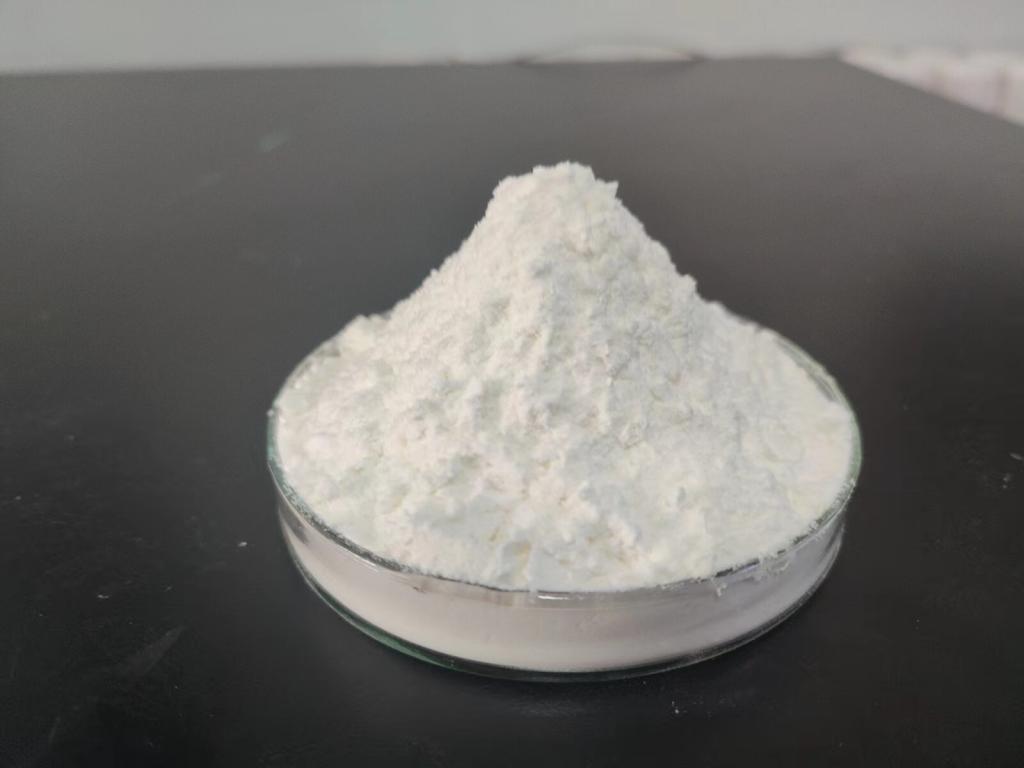Tel:+8618231198596

News
 CONTACT
CONTACT
 CONTACT
CONTACT
- Linkman:Linda Yao
- Tel: +8618231198596
- Email:linda.yao@dcpharma.cn
- Linkman:CHARLES.WANG
- Department:Overseas
- Tel: 0086 0311-85537378 0086 0311-85539701
News
Current Position:
Home >
News
>ε-Polylysine hydrochloride's antimicrobial properties offer a natural solution.
ε-Polylysine hydrochloride's antimicrobial properties offer a natural solution.
TIME:2024-03-29
Understanding ε-Polylysine Hydrochloride:
ε-Polylysine hydrochloride is a cationic homopolymer composed of lysine units linked by peptide bonds. It is produced through fermentation by certain strains of bacteria, notably Streptomyces albulus. This biopolymer is water-soluble, biodegradable, and non-toxic, making it suitable for various applications, including food preservation.
Antimicrobial Properties of ε-Polylysine Hydrochloride:
Broad-Spectrum Activity: ε-Polylysine hydrochloride exhibits broad-spectrum antimicrobial activity against a wide range of microorganisms, including bacteria, fungi, and some viruses. It targets microbial cell membranes, disrupting their integrity and leading to cell lysis and death.
Mechanism of Action: The antimicrobial action of ε-Polylysine hydrochloride is primarily attributed to its cationic nature, which allows it to interact with negatively charged components of microbial cell membranes. This interaction disrupts membrane structure and function, leading to permeabilization and leakage of intracellular contents, ultimately causing microbial death.
Resistance Mitigation: Unlike some conventional antimicrobial agents, ε-Polylysine hydrochloride's mechanism of action makes it less susceptible to microbial resistance development. Its polymeric structure and mode of membrane disruption pose challenges for microorganisms to develop resistance, making it a reliable option for long-term use in food safety applications.
Applications in Food Safety:
Preservation: ε-Polylysine hydrochloride is commonly used as a natural preservative in various food products, including meat, poultry, seafood, dairy, and processed foods. Its antimicrobial properties inhibit the growth of spoilage microorganisms and foodborne pathogens, extending the shelf life of perishable foods and enhancing food safety.
Control of Foodborne Pathogens: In addition to preserving food freshness, ε-Polylysine hydrochloride helps control foodborne pathogens such as Salmonella, Escherichia coli, Listeria monocytogenes, and Staphylococcus aureus. Its effectiveness against these pathogens reduces the risk of foodborne illnesses and contributes to consumer protection.
Clean Label Formulations: As consumer demand for clean-label and natural ingredients continues to rise, ε-Polylysine hydrochloride offers a desirable alternative to synthetic preservatives and antimicrobials. Its natural origin and safety profile make it compatible with clean-label formulations, meeting consumer preferences for healthier and more transparent food products.
Benefits of ε-Polylysine Hydrochloride in Food Safety:
Natural and Safe: ε-Polylysine hydrochloride is derived from natural sources and is Generally Recognized as Safe (GRAS) by regulatory authorities. Its non-toxicity and biodegradability make it a safe and environmentally friendly option for food preservation, minimizing potential risks to human health and the environment.
Extended Shelf Life: By inhibiting microbial growth, ε-Polylysine hydrochloride extends the shelf life of perishable foods, reducing food waste and enhancing economic efficiency throughout the food supply chain. Its use as a natural preservative helps maintain food quality and freshness without the need for synthetic additives.
Preservation of Nutritional Quality: Unlike some chemical preservatives that may alter the nutritional content of foods, ε-Polylysine hydrochloride preserves the nutritional quality of food products, ensuring that essential nutrients are retained throughout storage and distribution.
Versatility: ε-Polylysine hydrochloride's versatility allows it to be incorporated into a wide range of food formulations and processing methods. It is compatible with various food matrices and processing conditions, offering flexibility for food manufacturers to develop innovative products while ensuring food safety and quality.
Challenges and Considerations:
Formulation Optimization: Developing stable formulations of ε-Polylysine hydrochloride for different food applications can be challenging due to factors such as pH sensitivity, temperature stability, and compatibility with other ingredients. Formulation optimization efforts are necessary to maximize its efficacy and shelf life in diverse food products.
Regulatory Approval: Regulatory requirements for the use of ε-Polylysine hydrochloride in food products vary across regions and jurisdictions. Obtaining regulatory approval may require compliance with safety standards, labeling regulations, and toxicological assessments to ensure consumer protection and market access.
Consumer Acceptance: Consumer perception and acceptance of ε-Polylysine hydrochloride-treated foods may vary depending on factors such as labeling transparency, sensory attributes, and familiarity with the ingredient. Education and communication efforts are needed to inform consumers about the benefits and safety of ε-Polylysine hydrochloride in food products.
Future Directions:
Research and Innovation: Continued research into the properties, applications, and potential benefits of ε-Polylysine hydrochloride in food safety is essential for unlocking its full potential and addressing existing challenges. Research efforts should focus on formulation optimization, efficacy testing, and safety evaluations to support its broader adoption in the food industry.
Collaboration and Partnerships: Collaboration among researchers, food manufacturers, regulatory agencies, and consumer advocacy groups can facilitate knowledge exchange, technology transfer, and regulatory harmonization efforts related to ε-Polylysine hydrochloride in food safety applications.
Market Expansion: Exploring new market opportunities and product applications for ε-Polylysine hydrochloride, such as plant-based foods, functional beverages, and dietary supplements, can diversify its usage and create new opportunities for innovation and growth in the food industry.
Conclusion:
ε-Polylysine hydrochloride's antimicrobial properties offer a natural and effective solution for combating foodborne pathogens and enhancing food safety in various food products. Its broad-spectrum activity, natural origin, and safety profile make it a valuable ingredient for food manufacturers seeking alternatives to synthetic preservatives and antimicrobials. As consumer demand for clean-label and natural foods continues to grow, ε-Polylysine hydrochloride presents opportunities for developing healthier, safer, and more sustainable food products that meet the evolving needs and preferences of consumers worldwide. Through collaborative research, innovation, and market development efforts, ε-Polylysine hydrochloride can contribute to the advancement of food safety practices and the creation of a safer and more resilient food supply chain for future generations.
- Tel:+8618231198596
- Whatsapp:18231198596
- Chat With Skype







